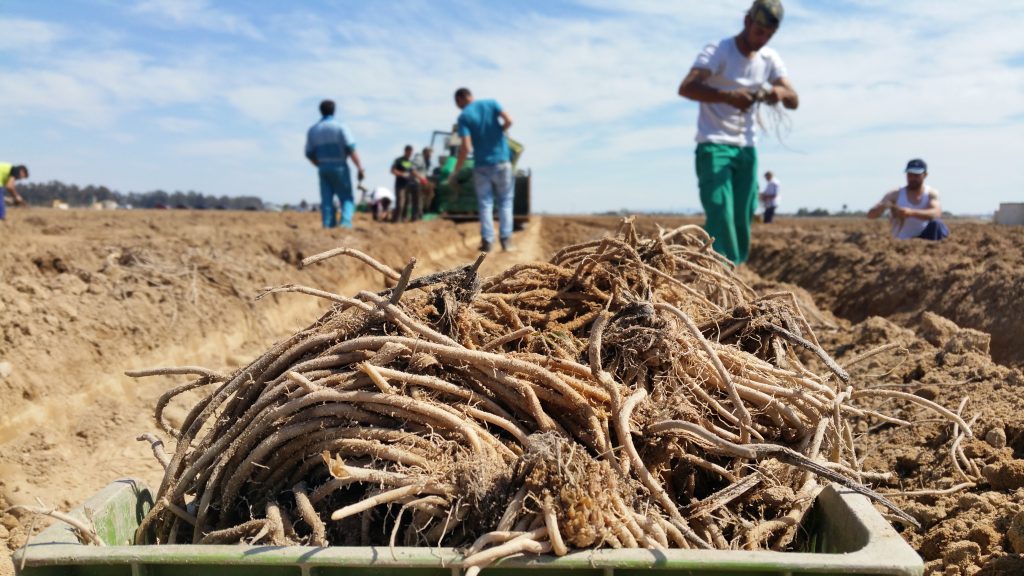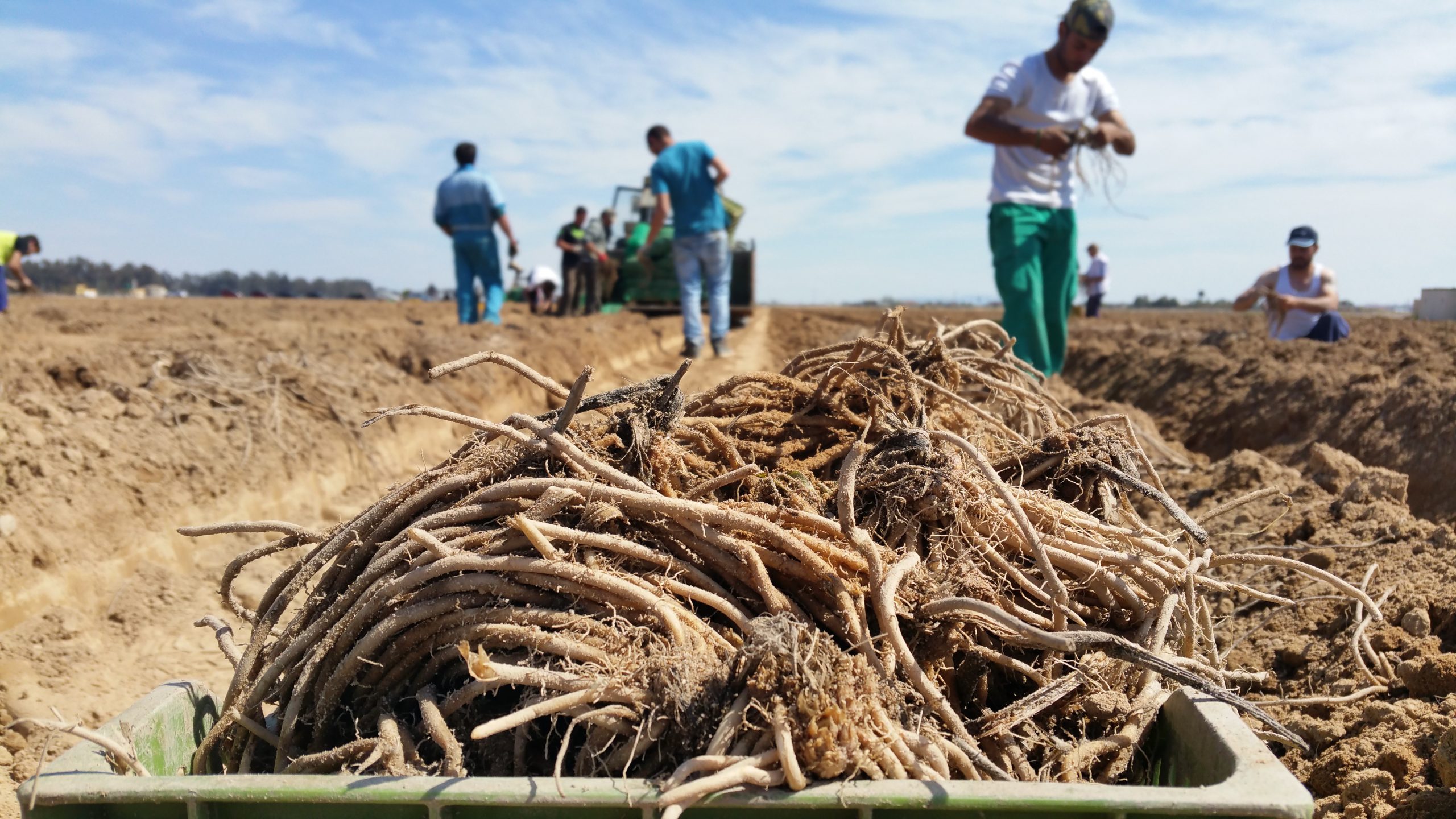Establishing an asparagus plantation
Asparagus is one of the few perennial vegetable crops. Its installation is planned two years ahead and the plant can be exploited for about ten years. Nevertheless, it is the planting that is the defining moment. It’s the moment when multiple technical choices must be made. Soil and climate often represent imposed parameters, but variety, density, depth of planting, etc. are more strategic decisions. The basics of plot preparation and tillage are common to any cultivation. Notable development in asparagus cultivation has come in the form of the prior input of green manure, the addition of organic matter and the deep working of the soil. What are normally considered recommendations become obligations when replanting asparagus on asparagus. Lastly, it is the planting that determines the “economic potential” of the plot. The potential yield rests on the varietal choice, its density and the technical means implemented (irrigation, fertilisation, plastic cover, etc.). However, the planting configuration also influences yield as well as harvest speed, a determining factor in the final cost of production.
Respect the keynotes of plantation
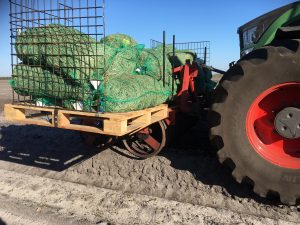
Cultivating asparagus requires respecting certain “keynotes”. The first step is to define the inter-row spacing, taking into account the existing equipment on the farm in order to avoid the need to invest in specific materials. Then, the rows must be of adequate length to optimise the investment in mulch, drip feed systems and labour for harvesting. For example, a hectare planted with 3.30m between rows represents 3 linear kilometres of ridge. This relates to the densification of asparagus (see box). The second keynote is the volume of land available to the roots; the larger the volume, the larger the root mass. A plant’s yield is, of course, proportional to its root mass. The third keynote is to ensure that after too much rain or even flooding in winter, plants do not suffer from the presence of standing water. A solution in this regard is to incorporate high ridge cropping (see Asparagus World No. 2).
Expanding inter-row gaps
Besides respecting these keynotes, many other precautions must also be taken, starting with healthy, well-drained soil (see box). Soil preparation begins one year before planting. This is the time to sow green manure, like Ray-grass, rye, mustard, siletta, phacelia, etc., which will provide a significant mass of organic matter when incorporated into the soil. However, it also destroys perennials, meaning that the land must be free and drained at the end of the summer before planting. Modification of lime or magnesium content in the soil is carried out if necessary. Then, sub-soiling at a minimum depth of 80 cm is carried out across and in the direction of the rows. The supply of decomposed organic matter (dung, compost, etc.) is focused on the planting row. Then a spader passes along the row working at a depth of between 0.60 and 1.10m. The machine must work at very slow speeds in order to create a homogeneous, aerated, fertilised profile at all depths, which facilitates the descent of roots and thus limits the rise of the rootstock. 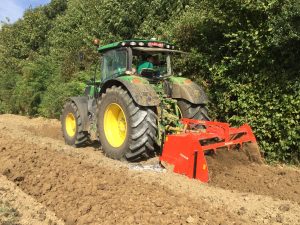
The orientation of the planting rows is another important element, with planting usually carried out in the direction of the slope, if one exists. The orientation of the rows can also be in the direction of the prevailing wind. However, with the widening of the distances between rows, not ridge-splitting at the end of the harvest and the grassing, the current trend is to plant across the wind as this strategy ensures better weeding efficiency. It also promotes the creation of a micro climate and avoids plastics films blowing away in high winds (see page ????).
Adapting to the current and future climate
Then comes the choice of the variety (or varieties) to plant. Asparagus World No. 1 devoted a long article to the presentation of varieties (“Varieties undergoing innovation”), while Asparagus World No. 2 contained an article on the choice of crowns (“How to achieve a good plantation”). Bear in mind, however, that the selected variety must meet market demands to ensure it can be successfully marketed. Choosing vigorous and disease-resistant varieties is vital given the new legislation focused on reducing the use of chemical crop protection. The calibre of the spears determines the crop’s profitability as it is the cost of producing a kilo of asparagus that essentially accounts for the cost of the harvest. Choose good calibres, as a 15g spear costs as much to harvest as a 45g spear, and is therefore 3 times cheaper per kilo to produce. Another key factor that now must be taken into account is how best to adapt to the current and future climatic conditions (see page 10).
Choosing the right soil
A healthy, deep and well-drained soil is conducive to good asparagus cultivation. It is sometimes necessary to dig ditches and lay drains to improve these soil properties. But this is not about having dry soil – access to water and irrigation is essential! The ideal soil has a pH of between 6 and 7, and maximum clay content of 15% to avoid the development of fibres and bitterness in the spears. The maximum salinity tolerated by asparagus is 10 grams per litre. Soil test samples are taken at depths of 10-40 cm and 40-80 cm.
Plant in deep soil
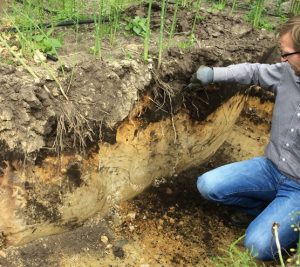
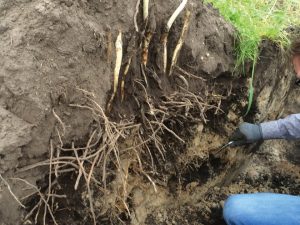
The use of spaders and deep soil planting is a fairly recent innovation. The goal is to get as much good soil as possible deep down and to oxygenate the soil as much as possible in order to attract as many roots as possible. Some equipment can allow the soil to be worked at depths of over a metre. But, it is imperative to adapt the depth at which the soil is worked depending on the location of the bed-rock so as to avoid bringing up stones, clay, and chalk, etc. Working in the summer or autumn, rather than in the spring, will allow you to work at great depths. Before the passage of the spader, de-compaction of the plot must be carried out across the field on the entire surface followed by a second passage only on the row. “The rise of poor soil to the surface is not a problem because good soil on the surface serves no other purpose than to confine the roots horizontally. At these depths, three times more earth is mixed than before. The soil that is going to be fetched up from this depth is generally less rich than the surface soil. A new soil must therefore be made with at least 3 times more organic matter and 3 times more phosphoric acid per hectare concentrated on the row than with spader-free methods,” said Christian Befve, a consultant specialising in asparagus.
Asparagus is phytotoxic for subsequent crops 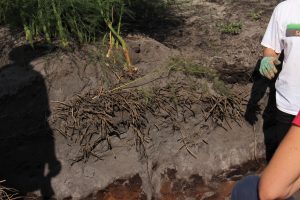
Replanting a new crop of asparagus on the same plot can be risky. Indeed, the presence of the roots of old asparagus would be phytotoxic for the new crop. In addition, phytotoxicity increases from year to year after the cessation of cultivation, especially between the 2nd and 4th year. This effect of toxins emitted by old crowns on later crops was highlighted by Ludger Aldehoff, a German researcher at BDSE Brucshal, whose work was presented at the 2017 International Asparagus Congress in Potsdam, Germany. The practical advice is to “replant as early as the year after an asparagus crop is removed or wait at least ten years.” The decrease in the root volume and absorption potential of the plant is also to be taken into account in the management of fertiliser inputs on an asparagus bed replanted on asparagus. Observations of 17 varieties of asparagus in virgin soil or replanted show that they react differently. Cumulus, Tallems, Gijnlim and Vitalim are found to retain their root potential in the replanting condition, while the root potential of Steiniva, Bacchus, Fortems and Ramon is reduced by about 30%. The other varieties show a decrease of about 20%.
Read also: Asparagus is becoming denser







